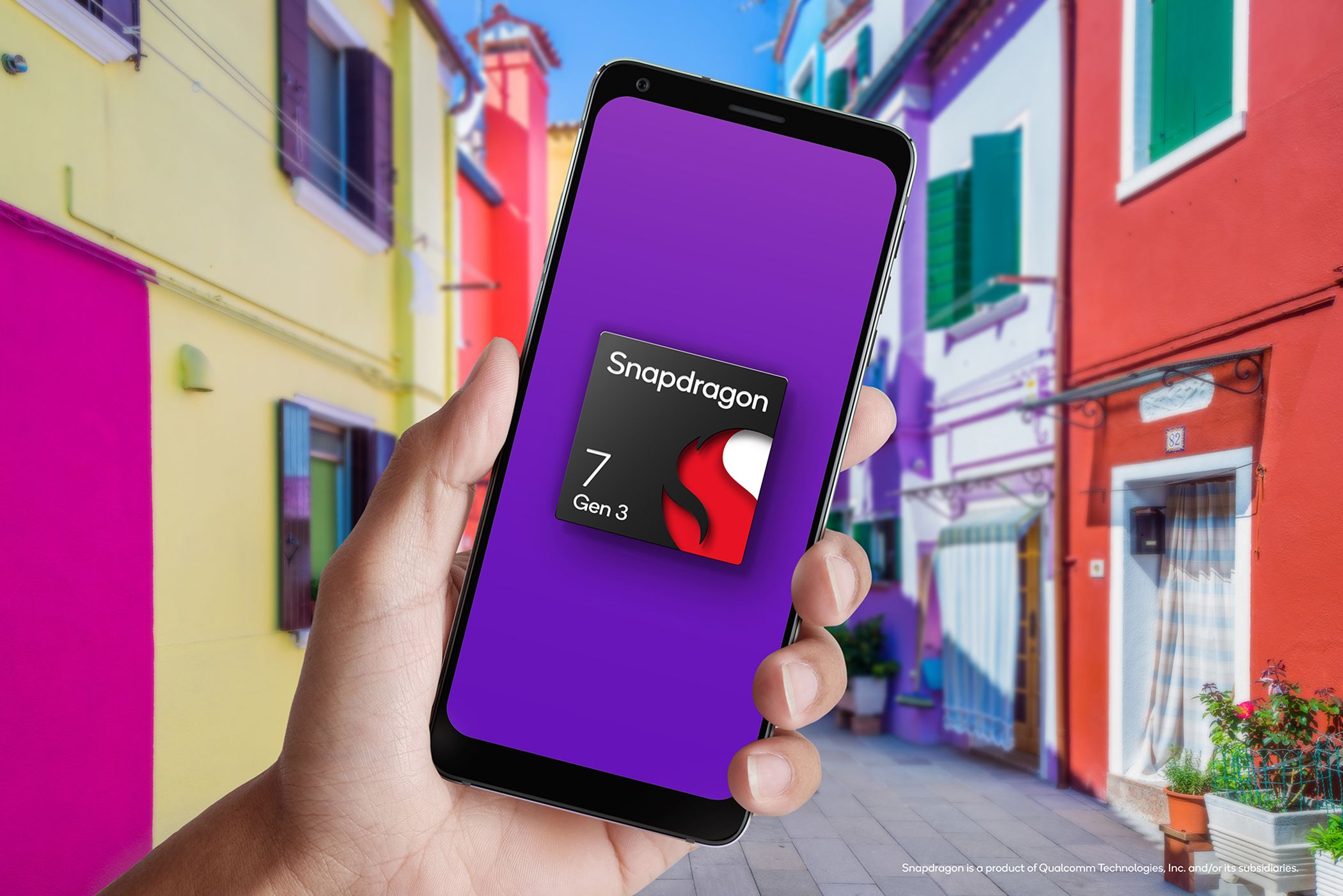Flagship phones are cool. They are powerful, and they come with all the best features the manufacteror can offer. But the truth is, there's a lot of people out there who don't really use high-end smartphones—either because they're expensive, or because it's not really what they're looking for. Midrangers are a good middle ground between flagships and ultra-cheap phones, and there's some impressive stuff out there for this range. Now, Qualcomm has announced the Snapdragon 7 Gen 3, its newest midrange chip.
This newest chip is the successor to the Snapdragon 7+ Gen 2. That chip wasn't used on a lot of phones, which is a shame, but this chip is coming right after the announcement of the Qualcomm Snapdragon 8 Gen 3. The new chip has a CPU that can clock up to 2.63 GHz, roughly 15% faster than the previous generation midrange chipset, and it also comes with over 50% faster GPU performance than its predecessor. We'll have to see whether these numbers are right, but for a midrange chip, any performance improvement is helpful. Qualcomm is also promoting the chip's AI capabilities in a similar manner to how it did with the 8 Gen 3, with the company mentioning that it has 60% improved AI performance per watt compared to its predecessor.
The chip is built in a 4nm process, making it extremely efficient. Other additions include support for up to 200MP cameras, 16GB of RAM, Wi-Fi 6E, and Bluetooth 5.3, as well as 4K@60fps video capture. We also have support for stuff such as Qualcomm Quick Charge 5, which the company says can charge your phone from 0 to 50% in five minutes.
This chip is set to power several 2024 midrange phones, although we don't know any specific phones yet that will use it. Samsung typically uses its own Exynos chips for its A-series midrange phones, although it could very well surprise us this year. We'll certainly see phones from companies such as Xiaomi, Oppo, and Motorola with this chip, but they will not arrive until sometime in 2024. Apple uses its own chipsets for all its iPhone and iPad models, just like recent Mac computers.
Source: Qualcomm
